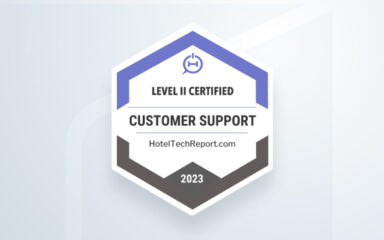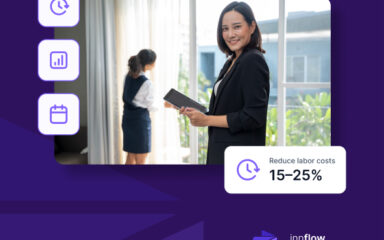There is no way to know exactly where 2020 will take us, or where we’ll end up in 2021. This process will be more challenging than a typical budgeting season, but it is wise to apply what the industry has learned in 2020 to produce a budget and marketing plan that is pandemic proof. Whether budgeting for 2021 is underway or if it’s yet to start, these tips can help hoteliers put the right foot forward.
Marketing Plan Tips
1. Analyze Competitive Set
Does the current competitive set still make sense? Do a SWAT analysis on competitors to guarantee that the set is correct. Verify that your portfolio is offering similar services at similar prices.
2. Channel Review
Ensure all discounted rates are open including AAA, Senior, Government, Military, Friends and Family, and employee rates. Review Free Independent Traveler (FIT) and Wholesaler rates. Although this strategy may not be desirable during better times, FIT, Wholesale, and discounted channels can bring in traffic to the portfolio.
3. Partnership Opportunities
Look to partner with growing companies and industries during this time: Amazon, Zoom, Healthcare, Instacart, pharmaceutical companies, movers, first responders, traveling nurses, colleges and universities, and so on. Business hasn’t stopped, so reach out to gain momentum with a key partnership. For example, there have been contracts between universities and hotels to extend student housing. Other properties have created specials for nurses and first responders.
4. Pick up the phone
Talk to your clients. Reach out to local and national volume accounts and ask how their business is doing. Ask what they are forecasting for next year. Then, reach out to your group clients, local CVB’s and Chambers as well. To determine the appropriate rates, check with your brand Salesforce representatives. Inquire about RFP expectations. It may be beneficial to extend the 2020 negotiated rates into 2021. Now is the perfect time to solidify those relationships so that when demand returns your business is top of mind.
5. Stay On Top Of Creative Trends And Advertise Online!
Attracting customers now requires creativity. Research what technologies should now be in meeting rooms to attract socially distanced events. Think outside the hotel and determine how to feature local outdoor attractions to accomplish socially distanced activities outdoors. Other trends have marketed rooms as luxury offices.
6. Online Advertising and Social Media
Whatever adjustments a hotel has made, document it, and market online! Tell the story of the hotels on social media and spend a little extra on the posts to increase the reach. It may be beneficial to advertise with the OTA’s to capture the markets that are ready to travel. Wherever the business decides to advertise, focus on reaching drive-to markets. Local and feeder regions will be the main source of business for the hotel industry now and for future recovery.
7. Rate Integrity
A lower rate will not increase demand. Avoid deep discounting and steer away from being the first property to lower rates. Deep discounting does NOT stimulate demand and tarnishes the perception of value for a specific hotel. Remember, traveling is a basic human desire, and once confidence is restored—whenever that will be—the numbers will return, and demand will increase rapidly.
Budgeting Tips
1. Look At Travel Trends
Large business travel, conferences, and conventions will not likely resume until late 2021 at the earliest, but people are still having other events. Weddings, baby showers, and traveling sports teams are still on the move within drive markets. Keep up with local government ordinances and CDC guidelines for the market and feeder cities. As restrictions are lifted, expect business to pick up. Review all special event dates. Evaluate the potential impact the economic, environmental, and travel concerns will have on demand.
2. How Are They Booking?
Begin this analysis by examining the booking windows by segment. How far out are clients booking their trips? Segment the reports by days, weeks, and months to understand what to anticipate as travel returns.
3. Review Industry or Brand Changes
Hospitality had departed from traditional services and guest interaction, so use brand guidelines to adjust and budget for guests’ needs. Some common items to include in your budgets should include:
- Updated cleaning procedures and products. Updating your labor models to include adequate cleaning time, and enough cleaning products are essential and will continue into the new year. Some hotels are even using robots to deliver items to rooms or to sanitize spaces.
- Investing in contactless check-in and check-out technology. Many properties are using apps and emails for virtual check-ins. Some have implemented keyless entry and payment options to reduce touchpoints and relieve travelers’ anxieties.
- Changing F&B spaces, and other common areas. Many brands have moved to a pre-packaged menu that is picked up or delivered to guest rooms. While breakfast buffets and community spaces are seeing reduced or no use, stick to brand guidelines to budget for current and future levels of use.
4. Collect Department Input
Meet with all departments and collect honest and constructive feedback on performance over the past year. Leaders must have greater context from the business as a whole to identify what’s working and what needs adjustment. These details will lead to a greater understanding of key performance indicators (KPIs) from the past year. With greater insight, operators can prioritize the best items in the budget and create accurate benchmarks for 2021.
5. Create Multiple Budgets
What are all of the scenarios? Reflect on what the portfolio did during the shutdowns, or how it would perform if occupancy began to return. Consider dividing the budget on a quarterly basis, then create a few options to anticipate the possible realities for the coming year. The future is uncertain, but this level of preparation could give your business a winning plan for any scenario.
6. Analyze KPIs
Measuring and evaluating KPIs will provide direct visibility into the financial health and performance of your business. Pay special attention to Occupancy, Forecasts, ADR, Segmentations, MPOR, and especially CPOR when creating budgeting goals for the next year. Understanding CPOR and all operating costs will help determine areas to improve and protect future profit. Use CPOR to identify opportunities to reduce unnecessary spending—especially when it comes to staffing and purchasing supplies.
The difference between an approximate analysis and an accurate one will depend on how data is filtered through software, integrations, and spreadsheets. Working with a system that integrates with your daily actuals allows for clear visibility across your entire portfolio.
7. Identify New Technology
Be proactive and consider new technology that could benefit the organization. Evaluate the current technology and take notice of any processes that seem inefficient. Determine if there are gaps in reporting, cumbersome workflows, or limitations in management functions. Ask how new technology could help achieve more business goals.
Hotel-specific technology may be able to improve processes, integrate with the existing systems, and generate the KPI’s hoteliers depend on during budgeting, forecasting, and daily operations. Hotel-specific software like Inn-Flow helps streamline operations, improve processes, provide industry-standard reports, automate repetitive tasks, and reduce the total cost of software ownership. Ultimately, technology should help your team achieve your business goals in the new year.



